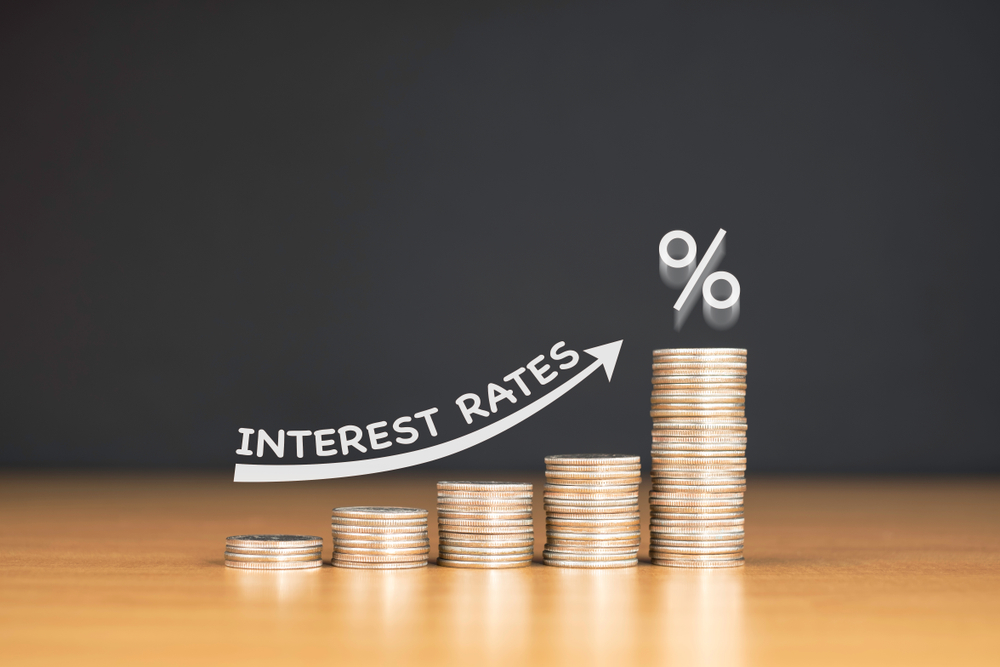The era of low interest rates is over. Done. Kaput.
I wrote about that back in early October, and since then it’s only become more certain.
The Federal Reserve’s target interest rate – which moves all other borrowing rates – is at its highest level since February 2001. And Federal Reserve officials have continued to signal that they plan to keep rates near that level for the foreseeable future.
Futures markets predict the Fed could begin to lower rates as soon as May of next year, but that will only happen if there’s a noticeable slowdown in the economy. Yet consider these major economic data points…
- The U.S. economy grew at a 5.2% annualized pace in the third quarter, well above the long-term average rate of 3.2%.
- The labor market couldn’t be stronger. It continues to create jobs at a healthy clip – 199,000 in November alone and 2.5 million so far this year. And the unemployment rate has ticked down to 3.7%. Keep in mind… that rate has been below 4% for 22 consecutive months, something that hasn’t happened since the 1960s.
And while inflation has come down from around 9% last year to 3.2% in October, it’s still well above the Fed’s target rate of 2%.
Those all suggest that the economy is expanding and not about to contract. If they all continue in that direction – and I don’t see any major reason they won’t – the Fed will likely hold off on cutting rates until the second half of 2024, if not longer.
And that will keep all other borrowing rates elevated, from mortgage rates to car loans to credit card rates. Businesses, too, will have to pay more to finance operations and expansions.
Of course, while this seems like a “new normal” to many Americans – especially younger people – it’s in fact a return to normal. The ultra-low rates we’d seen for nearly a decade and a half were the actual anomaly.
If you look at borrowing costs over the span of the last five decades, you can see they were higher for most of that time than they are today (the 10-year Treasury yield is a good proxy for borrowing costs across the board).

And here’s the important thing: Higher borrowing costs were not a barrier to economic growth and bull markets during all those years. Americans – including consumers, investors and business executives – got used to them and thrived.
The transition from ultra-low interest rates to slightly higher rates will change some things, however.
And there will be winners and losers in the new environment. Here are a few of them.
The Losers
- Borrowers and debtors. Anyone looking to finance a new purchase and anyone with variable rate debt (on credit cards, for example) will suffer from higher rates.
- Homebuyers. Mortgage rates are now above 7%. Worse, because so many current homeowners locked in rates below 4% (the average rate for existing homeowners is 3.6%), they’re reluctant to sell, which further cuts supply and drives prices higher.
- Certain stocks. Many companies will suffer from higher rates, paying more to roll over their debt or expand their businesses. This will erode profit margins and eventually hurt stock prices for specific companies.
- The federal government. Uncle Sam was able to borrow at rock-bottom rates for over a decade, easily financing years of deficit spending. That’s all changed, and the government will have to roll over trillions of dollars in debt into higher-yielding Treasurys.
But it’s not all bad…
The Winners
- Savers. Those people putting money into savings and money market accounts and certificates of deposit (CDs) will enjoy much better returns. You can now find CDs with rates above 5%.
- Bond buyers. All kinds of bonds look very attractive now. A virtually riskless 2-year Treasury yields 4.6%. Those willing to take a little more risk can take advantage of yields on investment-grade corporate bonds that are higher than 5%. And high-yield bonds are delivering yields that exceed 8%.
- Retirees. Paring down risk as you get closer to retirement is a no-brainer. With bond yields much higher, that can now be done without sacrificing much return.
- Stock bargain hunters. The era of easy money made it more difficult to find bargains in the stock market, as low rates made asset holders complacent and only rarely desperate to sell. Higher rates should change that and produce many panicked sellers. Investors willing to be greedy when others are fearful will benefit.
I suppose life is indeed what you make of it. Some will benefit from the new interest rate regime. Others will be challenged by it.
